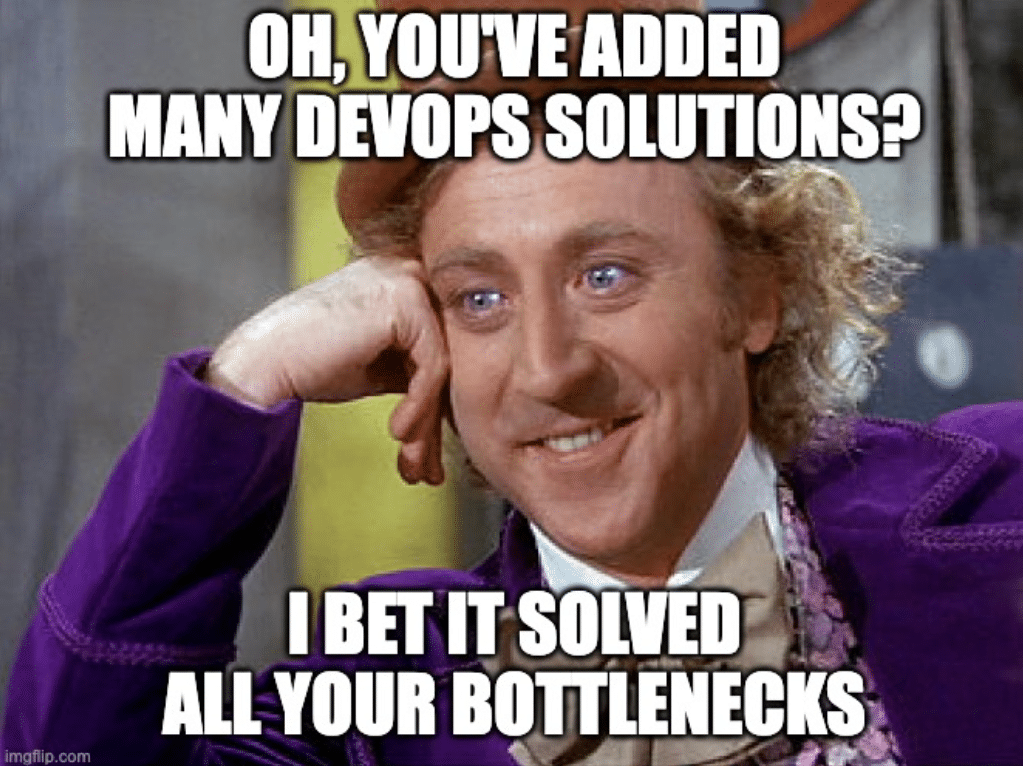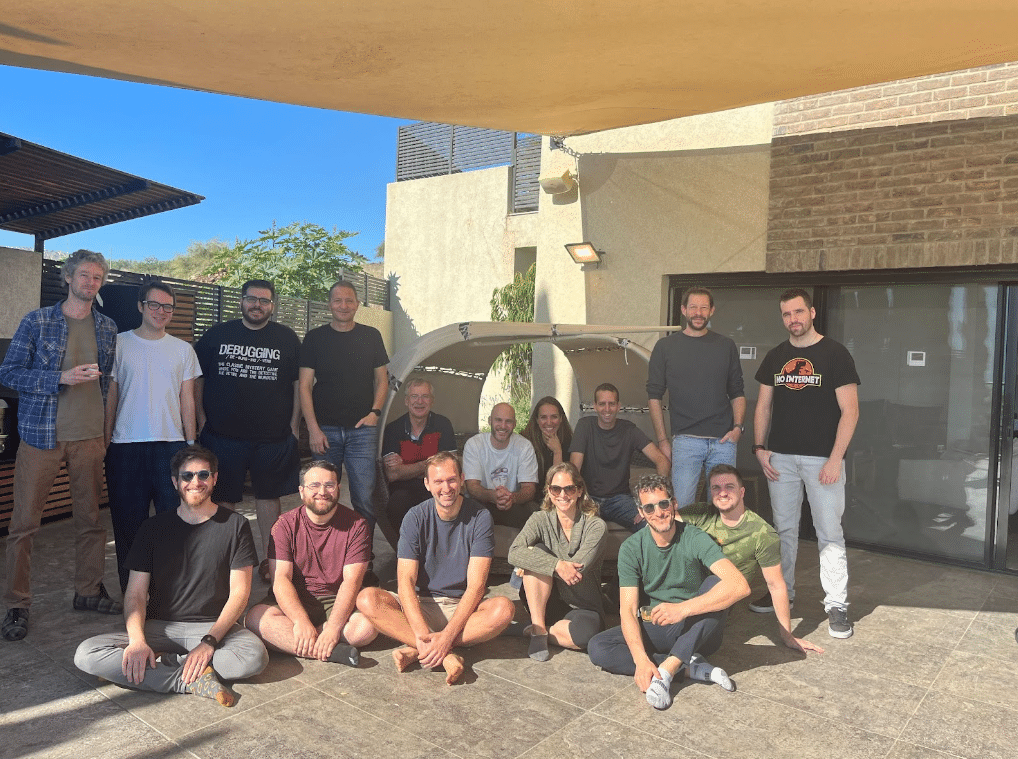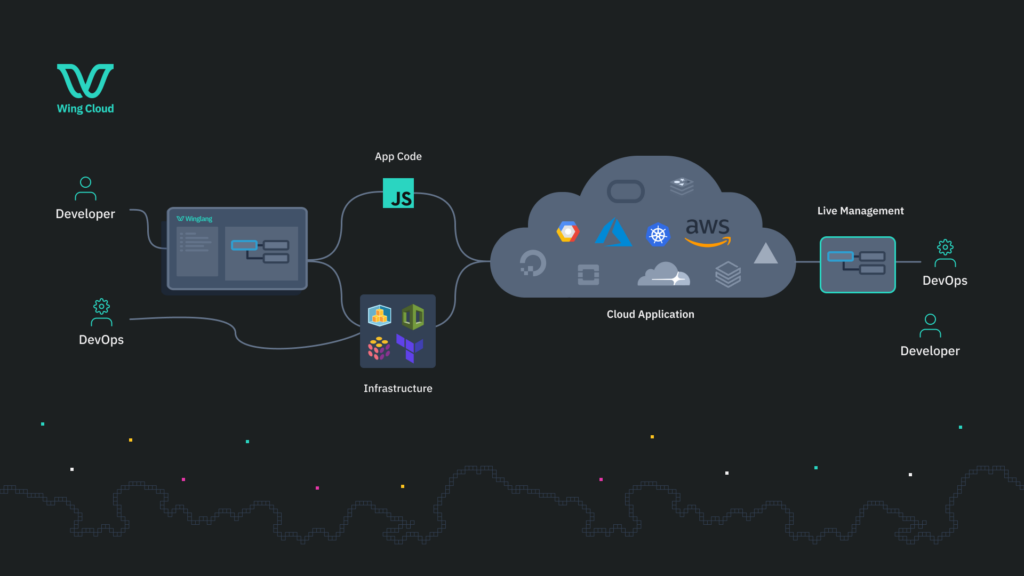Investing in Wing Cloud: Reshaping Cloud Software Development

Wing Cloud, the latest addition to Grove Ventures’ portfolio, is prepared to solve cloud complexities
This Tuesday, we were excited to announce that Grove Ventures co-led Wing Cloud’s $20M seed round as the company is poised to revolutionize software development in the cloud era.
In recent years, we observed a proliferation in cloud, DevOps, and infrastructure startups. Many offer incremental innovation but often fall short of addressing major challenges. We believe that cloud adoption is still in its early stages and that by streamlining and simplifying modern software development, we can redefine the entire cloud development process. To do so, it takes a bold team with a ground-up approach. This is where Wing Cloud enters, with its vision to reshape cloud development as we know it.
When I was first introduced by a mutual friend to Elad Ben-Israel, Wing Cloud’s Co-Founder and CEO, he shared his clear definition of the problem, presented a grand vision, and laid out a detailed roadmap. His idea to create an abstraction layer for cloud development, that combines a unified programming and operational model that works across all cloud providers and services, was exactly what I was searching for following a series of discussions with our portfolio founders and engineering leaders. At our first meeting, we discovered that we share not only a passion for software infrastructure but also that we are both longtime Burners, we live one block apart, and we attend the same cafe every morning. It was as if we were ‘destined’ for each other. I was on cloud nine.
Software development in the cloud – “We were promised a magic wand. Instead, we got a fancy toolbox”
In the early days of cloud computing, developers were promised simplicity that would allow them to focus mainly on business logic: A reality where servers and infrastructure management would become a thing of the past.
Instead of simplicity, the cloud landscape has morphed into a complex labyrinth, leaving developers overwhelmed and decision-fatigued. One would think that embracing DevOps methodologies and adopting modern architectures like Kubernetes and serverless would simplify things. In reality, developers found themselves battling with complexity. They had to adjust to the organization’s cloud provider(s) of choice, understand container orchestration platforms, and keep track of a plethora of ever-changing services and features.

Developers became consumed with infrastructure management and were forced to work closer than ever with their company’s DevOps teams, making them yearn for the days when they could simply focus on code. Organizations struggled with vendor and technology stack lock-ins, lost track of their strategic resource allocation, and were faced with security and observability challenges. Building for the cloud became far from seamless or intuitive.
The result was inefficiencies in code development and product innovation, hampering the potential for organizations to thrive and disrupt markets. This is a significant market failure for many companies as potential economic value is vanished due to development barriers. Therefore, it became imperative for organizations to proactively address these challenges, seeking innovative approaches and strategies to unlock the full potential of the cloud.

The evolution of the revolution
There has been a flurry of activity and remarkable innovation aimed at enhancing the development life cycle. Yet, engineering executives find themselves frustrated: every step forward, trying to implement existing cloud infrastructure solutions, ends up leaving them marching in place. We have reached a tipping point where breaking the cycle necessitates a fresh start.
In some areas, infrastructure management is easier and more scalable thanks to the brilliant minds behind earlier generations of Infrastructure as Code (IaC) companies like Chef and HashiCorp. They provided a unified method of defining and describing infrastructure. However, a holistic solution that could seamlessly connect the dots, reduce the infrastructure and code dependency and simplify everything from the ground up is still needed.
When I met Wing Cloud’s Co-Founder and CEO Elad Ben-Israel, it was an ‘Aha!’ moment for me as an investor: I felt I found the right visionary founder that would build the ground-up solution the industry is looking for. Elad is a well-known IaC figure and the creator of major projects in the cloud infrastructure space such as the AWS Cloud Development Kit (CDK), CDK for Kubernetes (CDK8s), JSII, and Projen.
Elad teamed up with Co-Founder and COO Shai Ber, who had already made a mark with Aniways and successfully led several engineering organizations. They assembled a remarkable team, and in the many days and hours I have spent with them, I saw with my own eyes how hungry and ready they are to tackle the Herculean task of redesigning the next generation of the cloud, one piece at a time.

Solving cloud complexity with Wing Cloud
Wing Cloud has a groundbreaking vision and the Chutzpah to overcome cloud complexity and reinvent the way developers write code and manage their infrastructure. Wing’s audacious vision recognizes that infrastructure and code should live harmoniously, yet independently, on the same plane.
- Winglang their innovative cloud-oriented programming language challenges the status quo and provides a standard layer across various cloud providers and provisioning engines. Say goodbye to the struggles of managing tangled code⇔infra dependencies. Winglang creates a common language for engineers and DevOps, reducing friction and streamlining the development life cycle.
- Wing Console is a remarkable addition that truly elevates the developer’s coding experience. With its distinctive interface, developers can seamlessly view and interact with their applications in real-time, right on their local machines. Powered by a local cloud simulator, Wing Console enables developers to gain invaluable insights and make iterative improvements during the development process.

Wing Cloud empowers developers by simplifying the fundamental groundwork on top of cloud infrastructure. No longer will developers be burdened by unnecessary complexity. Instead, they can focus on what truly matters—leveraging the unique capabilities of specific cloud providers for those killer technical features when they truly need them.
As Generative AI is gaining more and more prominence, Wing Cloud’s high-level abstraction layer for cloud development that takes both programming and operations into account also bridges the gap between developers and machine-generated code. It provides better trust and output understanding, and allows developers to safely harness the true power of the cloud.
We couldn’t be more honored to be part of this transformative journey with Wing Cloud, alongside fellow investors from Battery Ventures, StageOne Ventures, Operator Partners, Secret Chord, Cerca, and a long list of top-notch Angel investors including Amit Agarwal, President at Datadog; Armon Dadgar, Co-Founder and CTO of HashiCorp; Benny Schnaider, Co-Founder of Salto; Zack Kanter, Founder of Stedi; and other industry leaders including Rami Tamir, Amit Attias, Amiram Shachar, Idan Tendler, Ido Susan, Raanan Raz, Kfir Tishbi, Ronny Zehavi, Ohad Maislish, Omry Hay, and many more.
Here’s to simplifying the cloud, one line of code at a time!